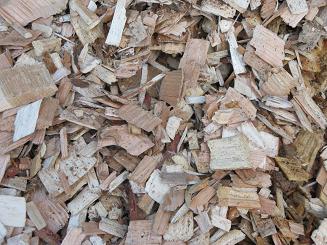By: Sarah Ashton
A number of management activities aimed toward increasing the health of forests can require removal of woody biomass. Fuel load reduction, removal of dead or dying wood due to insect or disease, and ecological restoration are three management activities that can result in substantial amounts of woody biomass.
Fire
Fire, often a result of lightening strikes, is a naturally occurring, necessary agent of change in wildland ecosystems. Fire performs a “cleaning” task, keeping fuels loads down and as a catalyst, driving vital ecological processes such as the regeneration of certain tree species. However, communities during the last century have feared fire and have not understand this natural process. Because of these fears, communities have made ongoing efforts to suppress fires in natural areas.
If not properly managed or exposed to natural disturbances such as fire, forests can accumulate excessive amounts of small diameter woody biomass and other vegetation that can act as fuel. Fire suppression over the past century, combined with intensive forest management and a generally warmer and wetter climate, has led to increasingly dense vegetation. When wildfires occur, this heavy accumulation of biomass often leads to larger and more severe fires. Such fires threaten public health and safety, homes, businesses, timber resources, watersheds, and wildlife habitat.
Public agencies and some private forest landowners are focusing efforts on thinning forests to reduce wildfire risks and to make forest stands more resilient to insects and disease. Fuel treatment thinnings, in addition to reducing fuel loads in overstocked forest stands, can provide large volumes of woody biomass. According to a recent study, about 8.4 billion dry tons of biomass have been identified nationally for potential treatment, yet due to inaccessibility, recovery limits, and the merchandizing of some timber for higher value, more traditional forest products, only 60 million dry tons of fuel treatment thinnings can be removed annually (USDOE and USDA, 2005).
Insects
Insects are another naturally occurring agent of change. However, a series of mild winters and drought-like summers in recent years has led to North America’s largest ever-recorded epidemic outbreak of mountain pine beetle. Millions of acres of trees have been killed, particularly in Colorado, Alaska, and parts of Canada. If harvested immediately, a practice commonly referred to as sanitation, the majority of wood can be used in conventional forest product markets. However, if wood is badly damaged or left to sit too long after beetle kill occurs, then traditional forest product markets may not be an option. A promising alternative market for this lower quality wood is bioenergy.
References
- U.S. Department of Energy (DOE) and U.S. Department of Agriculture (USDA). 2005. Biomass as feedstock for a bioenergy and bioproducts industry: The technical feasibility of a billion- ton annual supply DOE/GO–102995–2135. Washington, DC. [pdf]
